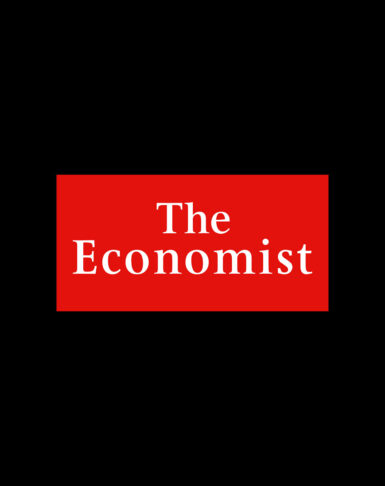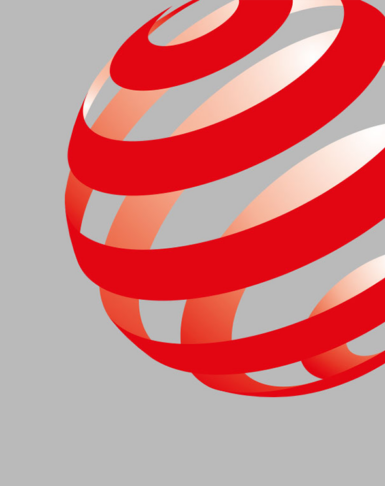
S+G Blog
The formula for irrational love
Group Director, Experience, Jenna Isken, shares her own journey as a Bobbie mom and what brands can learn from the U.S.' first and only mom-founded and women-led infant formula company.
Jenna Isken
April 2024

S+G Blog
The formula for irrational love
Group Director, Experience, Jenna Isken, shares her own journey as a Bobbie mom and what brands can learn from the U.S.' first and only mom-founded and women-led infant formula company.
Jenna Isken
April 2024
Philip Davies, President, EMEA took the stage at The Economist's 4th annual Business Innovation Summit, "Harnessing AI: from Fear to Fortune," to deliver a keynote address on artificial intelligence, branding and the importance of simplicity.
Siegel+Gale
April 2024

S+G Blog
AI, brands and the importance of simplicity with Philip Davies
Philip Davies, President, EMEA took the stage at The Economist's 4th annual Business Innovation Summit, "Harnessing AI: from Fear to Fortune," to deliver a keynote address on artificial intelligence, branding and the importance of simplicity.
Siegel+Gale
April 2024
Senior Strategy Director, Patrick Kampff, draws on the tenth edition of World’s Simplest Brands to explore how the hospitality sector has weathered the fallout of the COVID-19 pandemic and used technology to win over some demographics.
Patrick Kampff
March 2024

S+G Blog
Digital innovation in hospitality makes for simpler customer experiences
Senior Strategy Director, Patrick Kampff, draws on the tenth edition of World’s Simplest Brands to explore how the hospitality sector has weathered the fallout of the COVID-19 pandemic and used technology to win over some demographics.
Patrick Kampff
March 2024
In the world of exploding innovation in the AI industry, a great name paired with a great product can elevate your technology. But what should you consider before naming your AI tech or company?
Aaron Hall
March 2024

S+G Blog
How to pick a name for your AI startup
In the world of exploding innovation in the AI industry, a great name paired with a great product can elevate your technology. But what should you consider before naming your AI tech or company?
Aaron Hall
March 2024
How can brands in the automotive industry transform the consumer experience? The solution lies in merging experiential and educational moments, turning facts into feelings.
Miranda Wolf
March 2024

S+G Blog
How auto brands can transform the consumer experience
How can brands in the automotive industry transform the consumer experience? The solution lies in merging experiential and educational moments, turning facts into feelings.
Miranda Wolf
March 2024

S+G Blog
In memoriam Gloria Siegel
We’d like to take a moment to remember Gloria Siegel, who passed away Sunday morning, February 25. Gloria was Alan’s wife, business partner and soulmate for more than 60 years. Her incisive creativity in naming so many iconic brands was surpassed only by the kindness, grace and consideration she had for everyone. Gloria represented the very best of us at Siegel+Gale, and we will miss her dearly. Our heartfelt condolences go out to Alan, daughter Stacey, son-in-law Michael and grandchildren Ruby and Leo.
Howard Belk + David Srere
March 2024

S+G Blog
In memoriam Gloria Siegel
We’d like to take a moment to remember Gloria Siegel, who passed away Sunday morning, February 25. Gloria was Alan’s wife, business partner and soulmate for more than 60 years. Her incisive creativity in naming so many iconic brands was surpassed only by the kindness, grace and consideration she had for everyone. Gloria represented the very best of us at Siegel+Gale, and we will miss her dearly. Our heartfelt condolences go out to Alan, daughter Stacey, son-in-law Michael and grandchildren Ruby and Leo.
Howard Belk + David Srere
March 2024
No one in the United States needs reminding that healthcare is complex, says Lisa Kane, Group Director, Strategy. Knowing which parts of the patient journey are simple, and which are not, can help improve customer experience.
Lisa Kane
February 2024

S+G Blog
Healthcare is complex, but patient interactions don’t have to be
No one in the United States needs reminding that healthcare is complex, says Lisa Kane, Group Director, Strategy. Knowing which parts of the patient journey are simple, and which are not, can help improve customer experience.
Lisa Kane
February 2024
By taking a simplicity-first approach, airlines can resolve complexity and help alleviate some of the most stressful and painful moments throughout the passenger journey.
Amy Chen
February 2024

S+G Blog
How airlines can take off with simplicity-first solutions
By taking a simplicity-first approach, airlines can resolve complexity and help alleviate some of the most stressful and painful moments throughout the passenger journey.
Amy Chen
February 2024
We’re thrilled to share the incredible accolades and awards that have honored our colleagues' and clients’ imaginative, bold and brand-led work throughout 2023. Dive into the highlights that have made this year an unforgettable one. Congratulations to all involved!
Siegel+Gale
December 2023

S+G Blog
And the award goes to: a recap of Siegel+Gale’s honors in 2023
We’re thrilled to share the incredible accolades and awards that have honored our colleagues' and clients’ imaginative, bold and brand-led work throughout 2023. Dive into the highlights that have made this year an unforgettable one. Congratulations to all involved!
Siegel+Gale
December 2023
IPO preparation is typically focused on financials; corporate governance, listing protocols, and publishing sensitive data keep people up at night. But those who truly win see beyond. Successful IPOs prepare their brands with the same care and attention as their balance sheets. Here’s a simple checklist to ensure your brand is fit to fight on the big day.
Siegel+Gale
December 2023

S+G Blog
The heat is turning up! Is your brand ready? A checklist for preparing your brand for IPO success
IPO preparation is typically focused on financials; corporate governance, listing protocols, and publishing sensitive data keep people up at night. But those who truly win see beyond. Successful IPOs prepare their brands with the same care and attention as their balance sheets. Here’s a simple checklist to ensure your brand is fit to fight on the big day.
Siegel+Gale
December 2023
